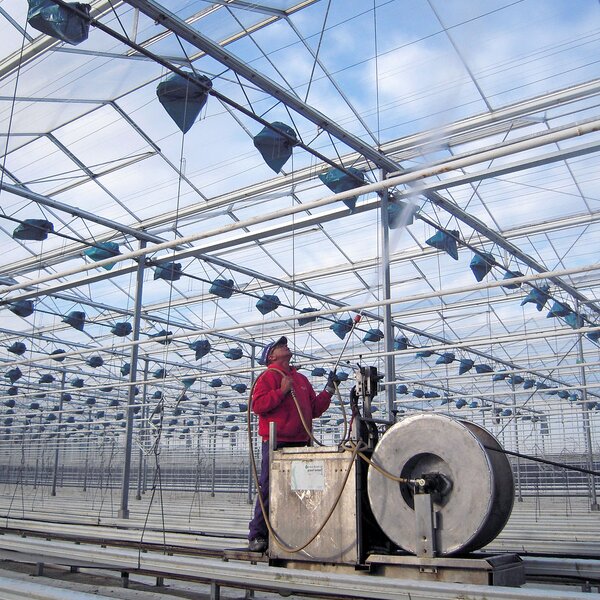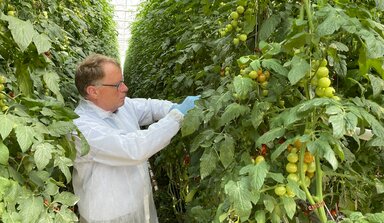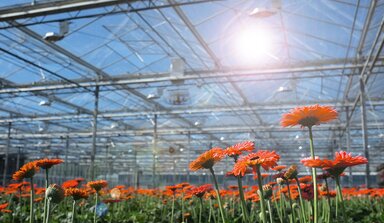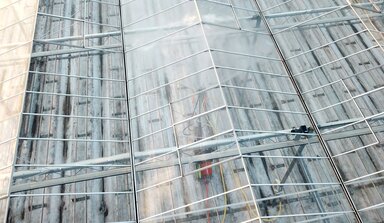Extra light by cleaning the glass
Over the years different innovations have been introduced to obtain more light in the greenhouse. White coated pillars, larger panes of glass and narrower gutters all help to ensure that more light falls onto the crop. But to make the most of this extra light, don’t forget to clean the glass.
Slightly dirty glass due to dust or algae can quickly result in a few per cent less light. Algae, dust, and soot from the boiler or cogenerator are common pollutants on glass. But inorganic dirt too hinders light penetration. Inorganic dirt consists of residue from fertilisers and crop protection products. Cleaning the glass is a simple and cheap solution to getting more light into the greenhouse again. Also, fungi and viruses have less chance of clinging to the dirt.
Crop change
For many growers autumn is the time to change over to the next crop. Often this includes a thorough clean of the inside and outside of the greenhouse. When all the crop residues and weeds have been removed, the inside is washed and cleaned. This can be achieved by using GS-4 by Mardenkro. Use of GS-4 is simple. Dilute accordingly, spray onto the glass and rinse off with water before it dries. All the dirt simply washes away. Brushing is not necessary. Make sure that no droplets land on any plants still present because it can damage them. It is always better to use products such as GS-4 in an empty greenhouse. Some crops, such as bulbs and tubers, can be harmed by the fumes given off by GS-4. Therefore you need to be extra cautious.

Despite the risks, GS-4 is often safer that other fluoride based glass cleaners. Conventional glass cleaners contain hydrogen fluoride gas, a product with harmful vapour activity. GS-4 is different to the conventional cleaning products because it contains no hydrogen fluoride. Therefore it is somewhat safer for people to work with GS-4.
Specialised contractors
Growers as well as specialised contractors use GS-4. Many contractors use Mardenkro’s shading agent products in the summer and the cleaning substances in the autumn. They have the right machinery for the job and know in which situation GS-4 can and cannot be used.
Dutch spraying company Paul Sosef of Naaldwijk has been using GS-4 to clean greenhouses since it arrived on the market. Hein Wubben of Paul Sosef: “We advise the customer about which is the best product to use. If there’s no crop in the greenhouse or if there’s a wall in between then we use GS-4. In the vegetable nurseries we use the fully automatic spraying vehicles that ride along the heating pipes. A second vehicle follows and rinses the glass clean. Wubben says that in recent years more greenhouses are cleaned. “Hygiene protocols and viral pressure require growers to thoroughly clean the greenhouse.” He is pleased with GS-4. “New biological substances have been introduced in recent years but these can not yet match GS-4,” says Hein Wubben.


